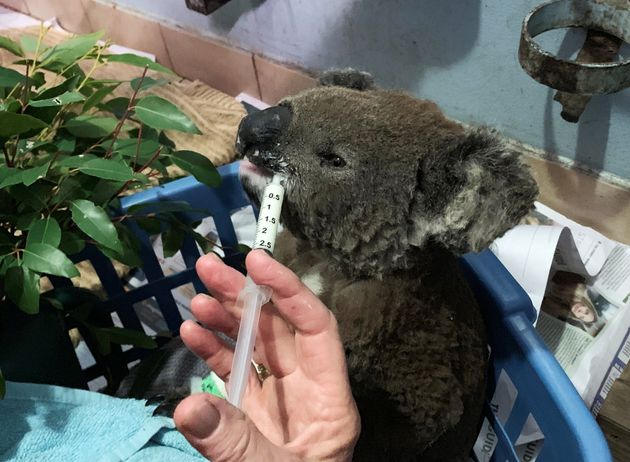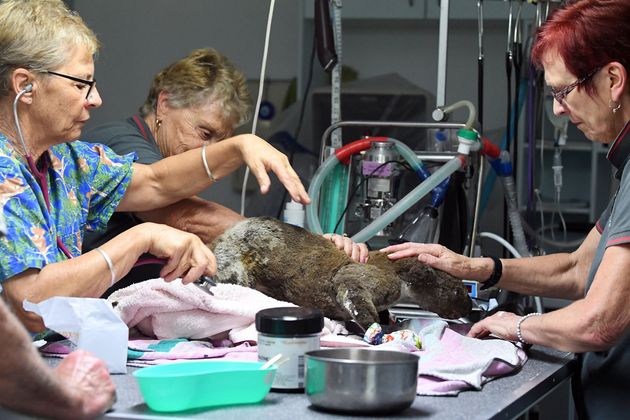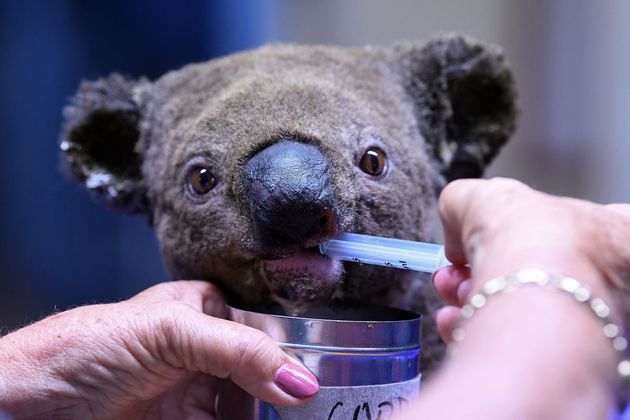Bushfires have wiped out about half the koalas living on a coastal reserve in New South Wales, experts say, as a record number of intense fires rage in the Australian state.
About 350 koalas living on the Lake Innes Nature Reserve have died in the blaze, the group Koala Conservation Australia estimates, and up to two-thirds of their habitat has been destroyed.
Animal carers at the Port Macquarie Koala Hospital nearby have been nursing 14 rescued koalas, bandaging their wounds and feeding them eucalyptus leaves and formula.

“We look for signals of pain – teeth grinding, distress – and we just take it on a day-by-day basis,” said Amanda Gordon, who leads the team of carers, adding that some of the marsupials’ health problems can be hard to spot.
“Sometimes koalas seem to be doing really, really well. Their paws might be healing up but if something’s going on that we can’t see there’s not really much we can do,” added Gordon, who has worked at the hospital for 15 years.


The carers estimate at least 10 days will be needed to assess the full damage to the koala population.
And one couple is joining the rescue efforts by taking in and nursing injured koalas in their own home in nearby Taree.
Christeen and Paul McLeod are now sharing their home with more than 20 of the marsupials, telling News.com.au that many of them have suffered singed fur and burns to their paws, ears and noses.
One patient, named Sootie, is regaining his strength from a laundry basket and is lightly sedated.
Population estimates for koalas, native to Australia, vary widely, from as few as 50,000 to little more than 100,000.
They dwell mostly in eucalyptus forests in eastern states and on the coastal fringes, usually living up to 20 years, carrying their young in a pouch and sleeping for up to 18 hours a day.
Warmer weather brought by climate change threatens to worsen conditions for koalas, as deforestation has narrowed habitable areas, said James Tremain of the Nature Conservation Council of New South Wales.

“Devastating bushfires are going to knock out some of these key population centres, but so also will increasing temperatures,” he said, by affecting the nutrition value of the leaves that are the animals’ sole food source.
“Koalas are definitely in trouble in New South Wales, but if the declines continue at the same rate as the last 20 to 30 years, koalas could be extinct in the wild by mid-century,” Tremain added.
Fires in the state’s north east have razed more than 850,000 hectares (3,300 square miles) of forest and farmland since Friday.
Australia’s most populous state declared a fire emergency on Monday with worsening conditions expected.
The wildfires have already claimed three lives and over 150 homes.